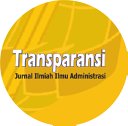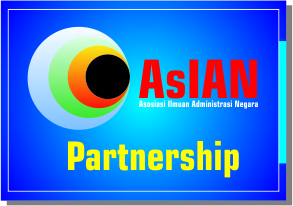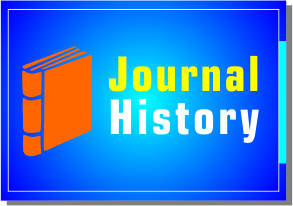Analisis Strategi Keunggulan Bersaing (Competitive Advantage) pada Balai Diklat Keuangan Makassar
DOI:
https://doi.org/10.31334/transparansi.v2i2.641Keywords:
Strategy, Excellence, Compete, TrainingAbstract
This study aims to analyze strategic factors both from the internal and external environment of Makassar Financial Training and Education Center in order to develop a competitive advantage strategy. This study uses descriptive-qualitative research, with primary data consisting of data generated directly from respondents containing questions on the questionnaire sheet and secondary data obtained and available to the relevant agencies or units. Data analysis techniques used are IFAS (Summary of Internal Factory Analysis) and EFAS (Summary of External Factory Analysis) in the development of SWOT analysis. The results showed that: (1) Makassar Financial Education and Training Center in terms of development strategies have tried as optimal as possible to utilize the strengths to reduce weaknesses while the strength factor is greater than the weakness factor; (2) Makassar Financial Education and Training Center in competitive competition, placed in a relatively good position in the competition for the external environment where Makassar Financial Education and Training Center in terms of strategic development has tried its best to take advantage of existing opportunities to encourage external organization; (3) Makassar Financial Education and Training Center is currently in a strong and potential position. The strategy recommendations given are progressive in nature, where organizations in such prime and steady conditions are urgently needed to further enhance, enhance growth and obtain maximum progress; (4) The competitive advantage strategies of the Makassar Financial Education and Training Center are currently with the assistance and implementation of training programs using local wisdom in South Sulawesi in particular and Eastern Indonesia in general, for example in the tourism, culinary, and creative economy sectors and increasing The frequency of open open classes outside of regular training / training takes into account the special state financial needs of the Regional Government and there is a disruption of information technology.References
Arikunto, S., dan Jabar, C.S.A. (2008). Evaluasi Program Pendidikan. Bumi Aksara.
Associate, S.A. (2012). Effect of Core Competence on Competitive Advantage and Organizational Performance. International Journal of Business and Management, Vol.7, No.1, pp.192–205.
Biodi, M., & Sanawiri, B. (2017). Analisis Lingkungan Industri Guna Menentukan Business Strategy dalam Rangka Mencapai Keunggulan Bersaing (Studi pada Pr. Alfi Putra). Jurnal Administrasi Bisnis, 50(3), 172-181.
Ghozali, I. 2006. Aplikasi Analisis Multivariat Dengan Program SPSS-Cetakan Keempat. Badan Penerbit Universitas Diponegoro Semarang
Hartono, J. 2011. Metodologi Penelitian Bisnis: Salah Kaprah dan Pengalaman-pengalaman. BPFE, Yogyakarta.
Hartono, J. 2011. Metodologi Penelitian Bisnis: Salah Kaprah dan Pengalaman-pengalaman. Yogyakarta: BPFE.
Indriyani, E., Harini, C., & Fathoni, A. (2018). Analisis Swot Sebagai Dasar Penentu Strategi Bersaing Pt. Paragon Technology and Innovation (Wardah Kosmetik). Journal of Management, 4(4).
Laporan Kinerja (LAKIN) Balai Diklat Keuangan Makassar Triwulan III Tahun Anggaran 2019.
Malik, R., & Said, S. (2019). Integrasi Total Quality Management dan Supply Chain Management Terhadap Keunggulan Bersaing dan Kinerja Perusahaan (Studi Pada PT. Semen Tonasa). Journal of Industrial Engineering Management, 4(1), 55-65.
Manambing, A., Mandey, S., & Tielung, M. V. (2018). Analisis Pengaruh Orientasi Pasar dan Keunggulan Bersaing Terhadap Kinerja Pemasaran (Studi Kasus Umkm Kuliner Tinutuan di Manado). Jurnal EMBA: Jurnal Riset Ekonomi, Manajemen, Bisnis dan Akuntansi, 6(4).
Marlina, E. (2017). Analisis Pengaruh Activity Based Costing Terhadap Keunggulan Bersaing Perguruan Tinggi. Prosiding CELSciTech, 2, eco_28-eco_25.
Peraturan Menteri Keuangan Nomor 177/PMK.01/2012 tanggal 6 November 2012 tentang Perubahan Atas Peraturan Menteri Keuangan Nomor 66/PK.01.2009.
Peraturan Menteri Keuangan Nomor 177/PMK.01/2012 tentang Struktur Organisasi Badan Pendidikan dan Pelatihan Keuangan.
Porter, M. (2001). Competitive Strategy. Jakarta : PT. Gramedia.
Rangkuti, F. (2015). Analisis SWOT Teknik Membedah Kasus Bisnis. Jakarta, PT.Gramedia Pustaka Utama.
Rangkuti, F. (2015). Riset Pemasaran. Jakarta, PT. Gramedia.
Rangkuti, F. 2004. Analisis SWOT Teknik Membedah Kasus Bisnis. PT. Gramedia, Jakarta.
Russell, S.N. dan Millar, H.H. (2014). Exploring the Relationships among Sustainable Manufacturing Practices, Business Performance and Competitive Advantage : Perspectives from a Developing Economy. Journal of Management and Sustainability ,Vol. 4, No. 3, pp.37–54.
Sekaran, U. (2006). Metode Penelitian Bisnis. Jakarta : Salemba Empat.
Sugiyono, 2005. Metode Penelitian Bisnis. Alfabeta, Bandung.
Sulistyawati, A. I., Indarto, I., & Saifudin, S. (2018). Beberapa Faktor yang Mempengaruhi Keunggulan Bersaing pada UMKM Handycraft di Semarang. Prosiding Seminar Nasional Unimus (Vol. 1).
Triton, P.B 2005. Riset Statistik Parametrik : SPSS13.00 for windows. Yogyakarta : Andi.
Downloads
Published
Issue
Section
License

This work is licensed under a Creative Commons Attribution-ShareAlike 4.0 International License
Please find the rights and licenses in Transparansi : Jurnal Ilmiah Ilmu Administrasi By submitting the article/manuscript of the article, the author(s) agree with this policy. No specific document sign-off is required.
- License
The commercial use of the article will be governed by the Creative Commons Attribution license as currently displayed on Creative Commons Attribution-ShareAlike 4.0 International License.
2. Author(s)' Warranties
The author warrants that the article is original, written by stated author(s), has not been published before, contains no unlawful statements, does not infringe the rights of others, is subject to copyright that is vested exclusively in the author and free of any third party rights, and that any necessary written permissions to quote from other sources have been obtained by the author(s).
3. User Rights
Transparansi : Jurnal Ilmiah Ilmu Administrasi spirit is to disseminate articles published are as free as possible. Under the Creative Commons license, Transparansi : Jurnal Ilmiah Ilmu Administrasi permits users to copy, distribute, display, and perform the work for non-commercial purposes only. Users will also need to attribute authors and Transparansi : Jurnal Ilmiah Ilmu Administrasi on distributing works in the journal and other media of publications.
4. Co-Authorship
If the article was jointly prepared by more than one author, any authors submitting the manuscript warrants that he/she has been authorized by all co-authors to be agreed on this copyright and license notice (agreement) on their behalf, and agrees to inform his/her co-authors of the terms of this policy. Transparansi : Jurnal Ilmiah Ilmu Administrasi will not be held liable for anything that may arise due to the author(s) internal dispute. Transparansi : Jurnal Ilmiah Ilmu Administrasi will only communicate with the corresponding author.
5. Miscellaneous
Transparansi : Jurnal Ilmiah Ilmu Administrasi will publish the article (or have it published) in the journal if the article’s editorial process is successfully completed. Transparansi : Jurnal Ilmiah Ilmu Administrasi editors may modify the article to a style of punctuation, spelling, capitalization, referencing and usage that deems appropriate. The author acknowledges that the article may be published so that it will be publicly accessible and such access will be free of charge for the readers as mentioned in point 3.
Every accepted manuscript should be accompanied by "Copyright Transfer Agreement"prior to the article publication.











